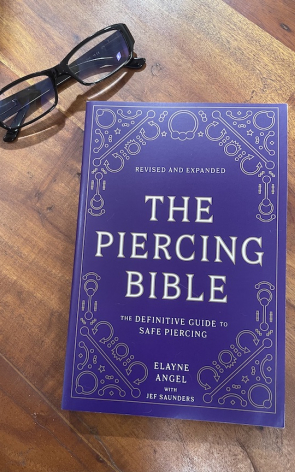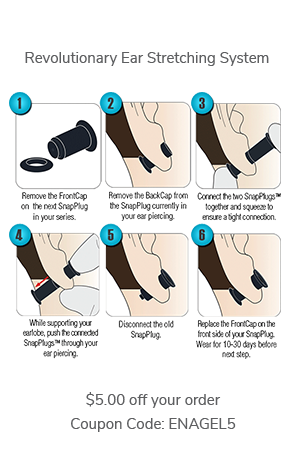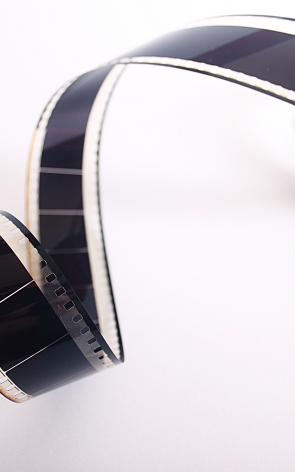I was recently interviewed about body modification (for a school project) and I will share with you what I had to say on the subject:
Q: In your experience, how has body modification changed over the years since you started compared to now? Is it more complex and safe or is it going downhill for lack of better words?
A: Body piercing has undergone a truly explosive revolution since I became involved. After a long history among tribal peoples followed by years of obscurity at the fringes of Western society, body piercing has now achieved massive worldwide popularity in contemporary culture. For an amazing education about the development of the modern body piercing industry, read my former employer/mentor Jim Ward's revealing book, Running the Gauntlet.
When I began my professional piercing career in the 1980s there was only one piercing specialty business in the United States, (Gauntlet) and I was its manager. At the time, only ear piercing was commonly practiced and the combination tattoo-and-piercing studio had yet to be seen. Piercing was a fringe activity practiced primarily by gay men and "kinky" people in the consensual BDSM scene. [Meant with the utmost respect, as I identify as one of them.]
It was SO different! For example, nowadays everyone knows about tongue piercings, but back in the 1980s, before body piercing was in the public eye, I used to tell people that my tongue piercing was an acupuncture stud for weight control. Everyone believed me because nobody had ever heard of a tongue piercing at that time.
The meteoric rise in the popularity of body piercing has resulted in a proliferation of piercers and jewelry. Some of the products and services are good, but unfortunately many are of very poor quality. Piercing establishments range from inexpensive jewelry kiosks at shopping malls to high-end specialty studios staffed with professional piercers, the latest equipment, and top-quality jewelry. There is a big difference between them! There are still no standardized regulations, piercer training, or competency requirements in the United States. At most, local laws mandate hygiene requirements or restrict the piercing of minors. In many cities, however, even these simple regulations do not exist; in others, local laws are not enforced.
The upshot is that piercing is far more prevalent and available than ever before, and there's quite a mixed bag of practitioners in the industry. Therefore, consumers need to be educated to make good decisions and that's one of primary reasons I wrote my book, The Piercing Bible--The Definitive Guide to Safe Body Piercing.
Q: How do you think the public views different types of modification and how has that perception changed? (I.E. A nose piercing compared to a skin diver, a tongue piercing compared to a split. A smaller tattoo compared to a full sleeve, or tattoos in general compared to scarification.)
A: While piercing and even extreme forms of altering the body are widespread, negative stereotypes about visibly modified people still persist. Still, body art is far more mainstream and accepted than it used to be. Many more "types" of people are engaging in all forms of body art and modification.
There's very little that's truly shocking any longer as the public has frequently been exposed to pretty much everything possible with the human body. I think, in part because of the presence of more extreme modifications, it may have helped the more common "milder" piercings achieve a greater level of acceptance, simply by comparison. A regular ol' tongue piercing seems a lot less shocking when pictured next to a bifurcated tongue....
Q: Plastic surgery has steadily become the poster child for the public's view on socially acceptable forms of body modification. What is your opinion on this? Do you think it is unfair that women who modify their chests to have massive breasts are more accepted than the woman who is perfectly okay with how her body looks, but chooses to have multiple piercings, tattoos, and scarifications done? Or is it about the same?
A: I perceive the main difference between body art and the popular forms of plastic surgery is that piercing and tattooing are frequently used to individuate the wearer, whereas nose jobs, breast augmentation, etc. are usually intended to bring the subject into conformity with a culturally accepted standard of beauty. Those who individuate are likely to come under greater scrutiny and be on the receiving end of more censure and disapproval; it comes with the territory.
The concept of "unfair" had never come up in my consideration of these issues. One's body is about the only thing a human has that is truly one's own and I believe that in general, people have poor boundaries. They frequently care too much about what others do with their bodies. My advice is to explore and enjoy your body and live your own life. What others think about it is a side issue that shouldn't take up too much of your focus or energy.
Q: In your opinion, what does a modification mean to an individual? Does it change from person to person or is there a general sense of ‘I’m cool now, or I’m unique’?
A: Many of my piercings and tattoos have different meanings or mark different peak experiences or events in my life. For example, my most recent tattoo was to celebrate my half-century on this earth. The tattoo is an abstracted Mayan sun ray design, repeated across the tops of my shoulders. This is in honor of the Mayan land in which I live (I reside in the Yucatan of Mexico).
From my long career of performing piercings, I can say with certainty that people have many different reasons for getting pierced. There tend to be certain themes, and there's an entire chapter in my book entitled "Motivations," which outlines the common inspirations.
Q: In your personal experience, did you get treated differently for your modifications, or were you treated the same as before you had them done?
A: I have long viewed myself a liaison between the world of the modified and the rest of the population. Because I'm thoughtful, articulate, and extremely personable, I have helped many of the non-fancy among us to learn about body art and to recognize it as a valid personal choice.
Though, achieving this type of acceptance has become easier over time as body art has become more widespread and gained popularity. I got my whole back tattooed with angel wings in the mid 1980s, when large tattoos on women were quite rare. Initially my tattoo caused more of a stir, because it was such an anomaly. Nowadays (25 years later) I receive positive feedback on my body art from some of the most unlikely sources. Little old Mayan ladies frequently comment, "Oh those colors on your tattoos are so pretty," or, "That's a lovely design on your arms."




